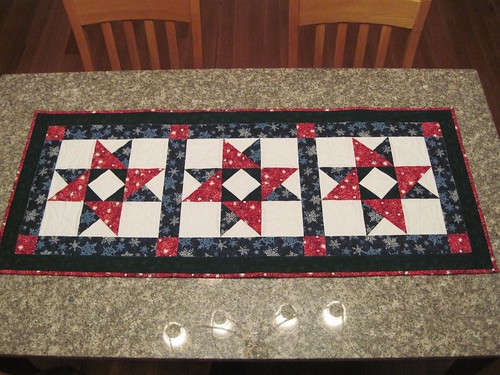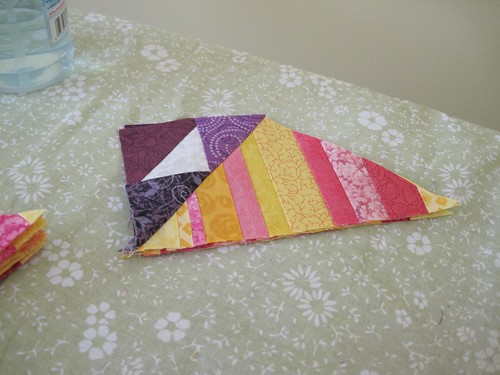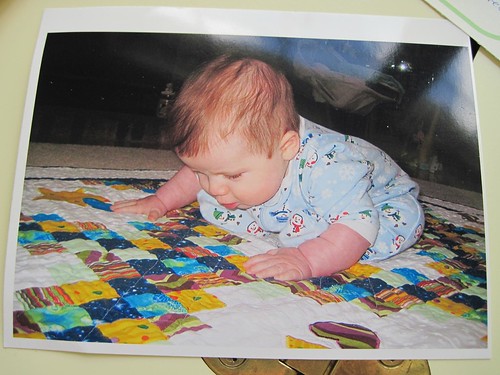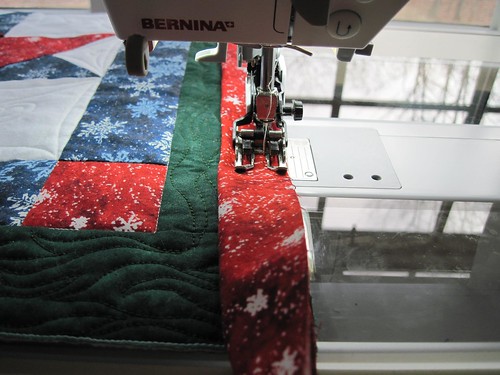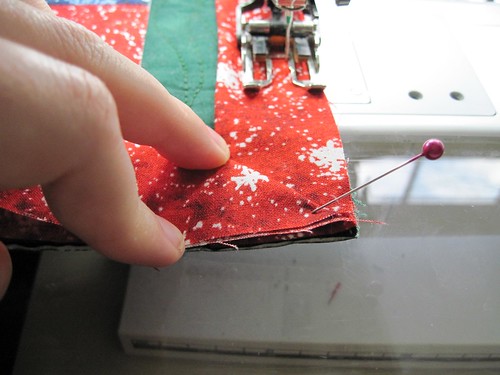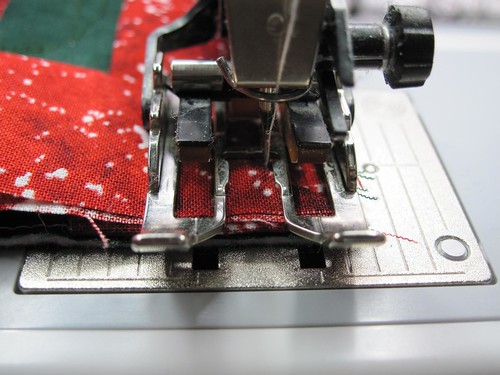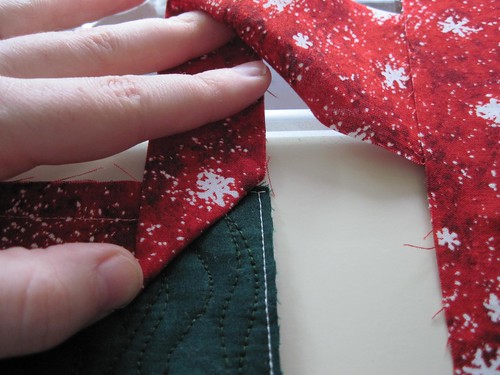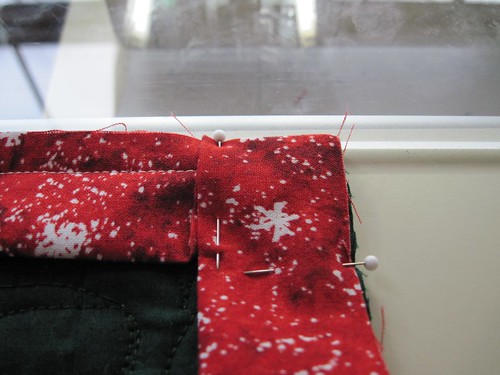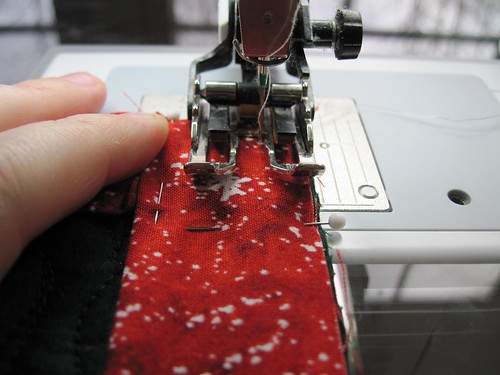For this week's "Wanna Know" Wednesday, I've decided to post directions on how to make a Spinning Star Table Runner. Here's the finished piece:
Spinning Star Table Runner
Fabric Requirements:
-
1/2 yard Neutral
-
3/8 yard Green
-
3/8 yard Blue
-
1/2 yard Red
-
1/3 yard for binding (2.5” wide, double-fold)
-
1.5 yards for backing (no seams; 1 yard with
seams)
* assumes 40” wide
fabric
Cutting Directions:
-
Neutral
o
(A) – Cut two (2) strips 4.5” wide. Cut twelve (12) 4.5” squares from the strips,
save the remainder of the strip.
o
(B) – Using the leftover portion from step (A),
trim the remainder down to 3-5/16” wide.
Cut three (3) 3-5/16” squares.
o
(C) – Cut one (1) strip 5.25” wide. Cut three (3) 5.25” squares. Then cut these on the diagonal twice to end
up with twelve (12) smaller triangles.
-
Green
o
(D) – Cut one (1) strip 3” wide. Cut six (6) 3” squares. Then cut these on the diagonal once to end up
with twelve (12) smaller triangles.
o
(E) – Cut four (4) strips 2.5” wide for
borders. From one strip, cut two (2)
rectangles measuring 2.5” x 16.5”.
o
(F) – From the remaining three strips from step
(E), cut/piece the strips to obtain two (2) rectangles measuring 2.5” x 48.5”.
-
Blue
o
(G) – Cut one (1) strip 5.25” wide. Cut three (3) 5.25” squares. Then cut these on the diagonal twice to end
up with twelve (12) smaller triangles.
o
(H) – Cut four (4) strips 2.5” wide. Cut ten (10) rectangles measuring 2.5” x
12.5” for sashing.
-
Red
o
(J) – Cut one (1) strip 5” wide. Cut six (6) 5” squares. Then cut these on the diagonal once to end up
with twelve (12) smaller triangles.
o
(K) – Cut one (1) strip 2.5” wide. Cut eight (8) 2.5” squares for setting
squares.
-
Binding
o
(L) – Cut four (4) strips 2.5” wide. Piece strips into one continuous strip for
binding.
Sewing Directions:
1.
Square-in-square blocks – Make 3 total.
a.
Take the 3 part (B) neutral 3-5/16” squares and
the 12 part (D) green small triangles.
b.
Sew one (D) triangle to one of the edges of a
(B) square. Press seam towards the
darker color.
c.
Sew one (D) triangle to the opposite edge of the
(B) square. Press seam towards the
darker color.
d.
Sew two remaining (D) triangles to the remaining
edges of the (B) squares.
e.
Continue for all three blocks. Final blocks should measure 3.5” square with
seam allowances.
2.
Three-quarter blocks – Make 12 total.
a.
Take the 12 part (G) blue triangles and the 12
part (C) neutral triangles.
b.
Match up edges of the blue and neutral triangles
to form one larger triangle. Sew and
press seam towards the blue triangles.
c.
Take the 12 part (J) red triangles and the
pieced triangles from step 2b. Sew long
edges together and press seams towards the red triangles.
d.
Continue for all 12 blocks. Final blocks should measure 3.5” square with
seam allowances.
3.
Assemble Spinning Star Blocks – Make 3 total.
a.
Layout sewn pieces from steps 1 and 2 along with
12 part (A) neutral squares. Arrange in
the pattern shown.
b.
Sew pieces into three strips, pressing seams as
follows:
i.
Top & bottom rows – press towards
three-quarter block.
ii.
Middle row – press towards three-quarter block
(red).
c.
Sew rows together. Press seams towards top and bottom rows (away
from the square-in-square block).
d.
Continue for all three blocks. Final blocks should measure 12.5” square with
seam allowances.
4.
Assembly
a.
Take four part (H) blue sashing strips and
assemble the strips with the Spinning Star Blocks to create one long row. Press seams towards blue sashing.
b.
Take four part (K) red squares and three part
(H) and sew together to create a long strip.
Repeat to make the 2nd long strip. Press seams towards blue sashing.
c.
Take the two long strips from step 4b and sew to
the long strip of Spinning Star Blocks from step 4a. Press seams towards the outer strips.
d.
Take two part (F) border strips and sew to the
top and bottom of the sashed block section.
Press seams toward border strips.
e.
Take two part (G) border strips and sew to the
sides of the sashed block section. Press
seams towards border strips.
5.
Finishing
a.
Layer quilt with backing and batting material
and quilt as desired.
b.
Trim quilt top to be square.
c.
Sew binding (L) onto quilt top per usual method.
Happy Crafting!~Sarah at upstateNYCreations
